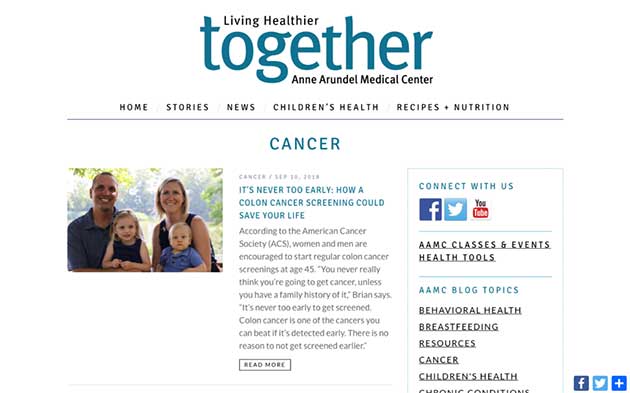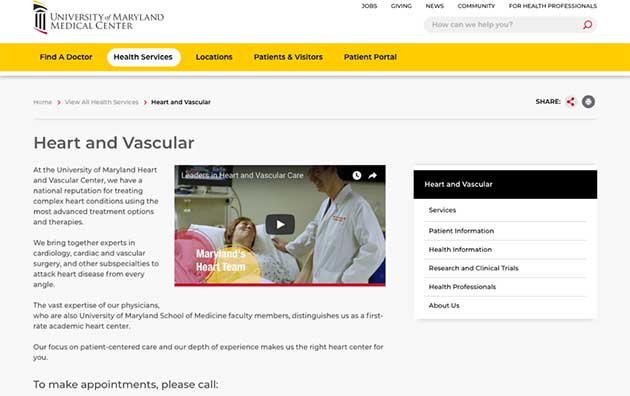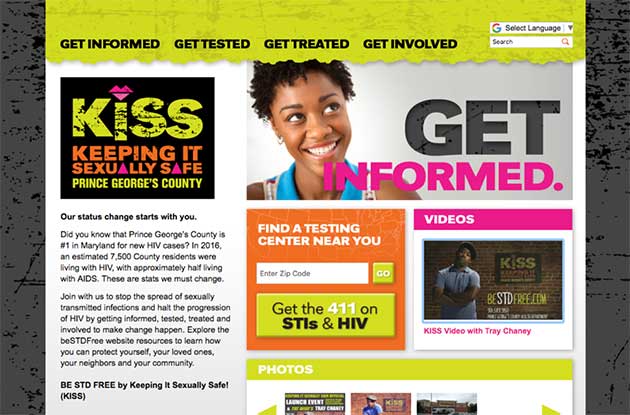Content is King
How to Create Engaging Healthcare Content


Write so that people can hear it and it slides through the brain and goes straight to the heart.
-Maya Angelou
Paging Dr. Google!
With more information available online than ever before, it should come as no surprise that people are turning to the Internet to self-diagnose a medical problem, research medical procedures, or research health and wellness topics. In fact, over 70% of Internet users say they’ve looked online for health information within the past year. And that means they’ll be clicking on healthcare practice websites that offer valuable, unique, and consistent content.
There are many different forms that online content can take that can position an organization as an authoritative thought leader. Here are some of the ones we have found to be most effective:
Blogs are the most common way that companies in any industry can establish authoritative thought leadership. The Mayo Clinic and Johns Hopkins are just two examples of world-class institutions using blogs to provide smart and authoritative content, but practices of all sizes can position themselves as an expert in a niche space and drive traffic to their website. Studies show that practices with a blog see a 55% increase in web traffic.
Anne Arundel Medical Center has a robust blog section offering valuable information to prospective patients. Information is organized by topic, such as behavioral health, cancer, and children’s health. Pediatric/children’s health posts are particularly effective for driving traffic from parents searching for information concerning their child’s health.

Newsletters are a great way to get your content in front of subscribers without them having to visit your site multiple times. Getting people to sign up for email newsletters is the biggest challenge with this route, so it’s particularly important to make the case that subscribers will be sent valuable, unique and consistent content if they sign up. Parenting, nutrition and physical fitness tips make particularly popular newsletter content.
Chesapeake Eye Care and Laser Center has their newsletter signup form on the right side of their content, with an option for the subscriber to choose how often they’d like to receive emails: instantly as soon as a new article is published, daily, weekly, or monthly.

Videos that are engaging and informative can be very effective at bringing more organic traffic to your site. According to HubSpot, websites with videos get over a 150% increase in traffic from search engines than websites that feature just images and plain text. The search engines are just reflecting human behavior: with average attention spans at about eight seconds, why would someone read five paragraphs when they could watch a two-minute video instead?
Videos can also be great ways to humanize your brand and make a strong first impression online. A video of a physician discussing their specialties and reasoning behind an approach to treatment will allow viewers to gain insight into the human side of that doctor. Likewise, a patient testimonial video lets viewers empathize with another human being who is facing medical challenges and overcame them with the help of your medical expertise.
Health explanatory videos about causes and symptoms, treatment and processes are some of the most highly searched for and viewed videos in the healthcare space. The University of Maryland Medical Center’s website has videos for each of their major service areas explaining their treatment process in more detail.

When Prince George’s County wanted to launch a campaign to reduce the spread of sexually transmitted infections, they built a microsite geared towards their target audience. The site includes a video for STD awareness featuring The Wire actor and county native Tray Chaney.

Infographics help readers better visualize information. Studies show that people retain over six times as much information after three days when an image has been paired with that information than when there is no image. The American Heart Association has created dozens of infographics in their effort to educate the public about good heart health. Check out their infographics about the effects of sodium below. Just remember to type out the contents of your infographic underneath the image for better SEO!

Interactive tools help users cut through medical terminology by allowing them to visually express what they are feeling. A great example of this is WebMD’s Symptom Checker, where users can point and click on a 3D model of a human body to identify and diagnose symptoms. But these tools could even be as simple as a pain assessment survey. Towson Orthopaedic Associates has an interactive diagram of a human body with information about various joint ailments.

Other forms of content your audience may find useful are case studies, ebooks, instructional guides, online games or quizzes, podcasts, webinars, and white papers. Some of these may lend themselves better to different audiences than others – it all depends on your practice’s niche.
Regardless of whether you’re writing a blog or posting a video, here are three fundamental tips for making any content effective in the healthcare space:
1. Define your audience. Chances are, if you’ve been running a medical practice’s marketing initiative for any amount of time, you’re familiar with the types of people who need your services. Defining your audience will not only determine what content you release, but also the form of content you choose. Is your audience looking for information that can be better conveyed in a short video or a newsletter series? The bottom line is that your content must be tailored to their interests, or they’ll scroll right past your site on Google.
One of the best ways to identify your audience is to build patient personas. Rather than trying to target “people with arthritis,” personas allow you to target specific people who are representative of your patient base. Use the information you already know about your patients to begin developing 3-5 fictional people complete with stock photographs to further humanize them, who represent your clientele. What is their name? What’s their gender, age, and income?

Name: Barbara Cross
Gender: Female
Age: 78
Occupation: Retired
Further information can be gathered from your patients’ behavioral patterns, whether at your practice, on your website or interacting with your brand on social media. What can you learn from the patient information forms they have filled out? If you need additional information, you can always simply ask the patient – whether in conversation or through a voluntary survey. How many other people are in their household? What do they do for work, or are they retired? What are some of their key values in life? What are some of their health goals and challenges? What are they looking for in a healthcare provider?
Once you have identified your patient personas, think about how these people would go about searching for information that would lead them to your practice. Then, create content that speaks specifically to the needs of each of your personas. Also keep in mind that people’s needs will evolve over time, and the needs of your personas should, too.
2. Be human. Medical jargon and technical content on a patient-facing website isn’t compelling and is often ignored. Ideally, your site should have a conversational and relatable tone. Try conveying the benefits of treatment in a way that prospective patients can relate to and can form an emotional connection with. One fantastic way to help users relate to medical content is to tell another patient’s story of how they overcame their medical challenges. A 2017 study showed that 85% of people considered an online testimonial to carry the same weight as a personal recommendation for building trust.
3. Make your content educational. Ultimately, people who read your content are going to be looking for useful answers to their questions. They are not looking for a sales pitch. A great content strategy allows your practice to become the authoritative resource for the medical questions they have. This authority allows you to begin building their trust now, so that it’s well-established by the time they actually need your services.
Today’s prospective patients are thorough researchers who want more content to get answers, so regardless of what form it takes, it’s critical to provide smarter, authoritative content in order to position your practice as their go-to resource.
Read more about humanizing your healthcare practice with 4 Ways to Build Patient Trust Online.
Or, check out how you can tell your practice's story through the words of your patients with Show, Don't Tell: How to Practice Effective Storytelling in Healthcare Marketing.


